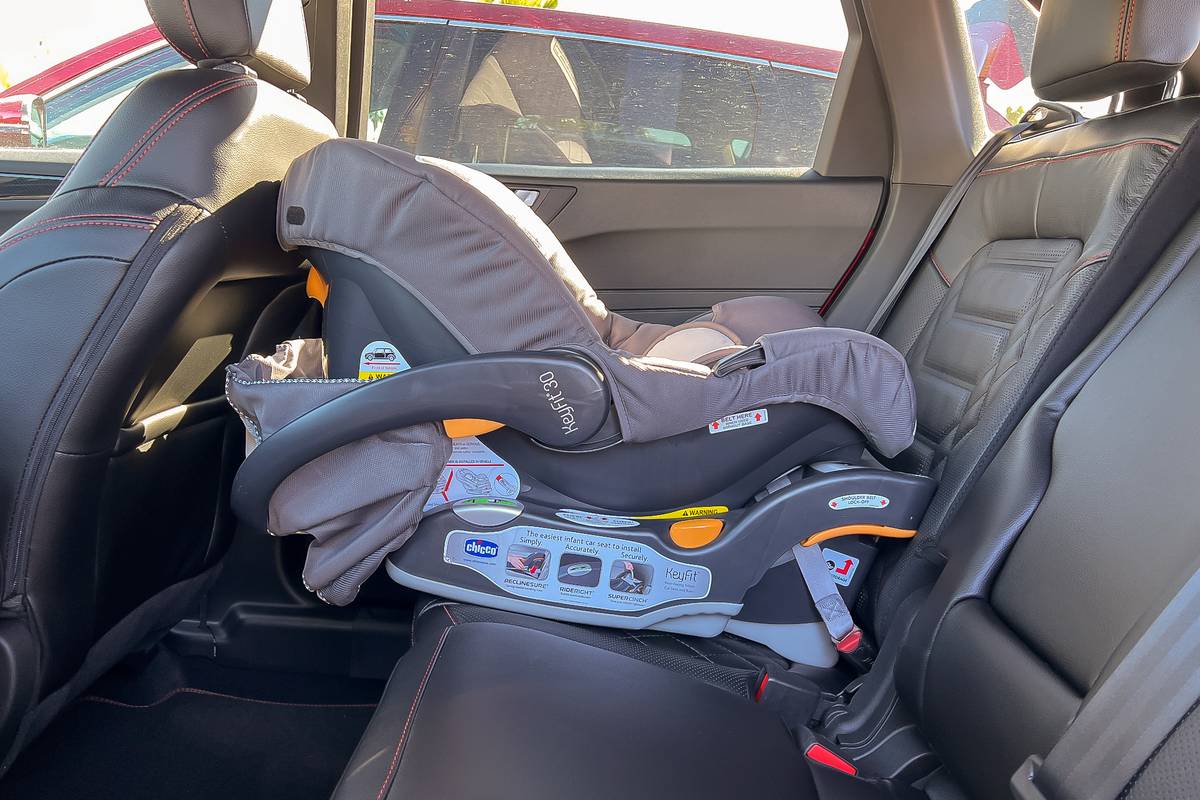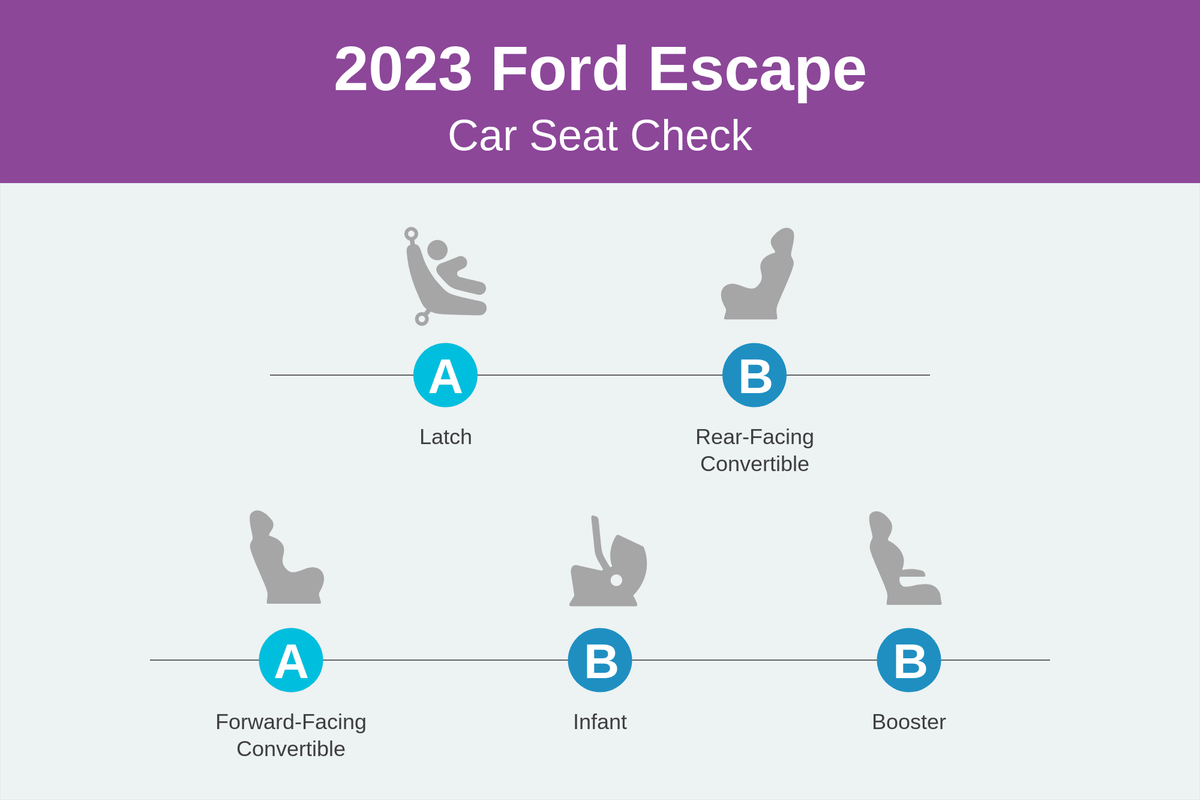How Do Car Seats Fit in a 2023 Ford Escape?


The verdict: Ford updated its compact SUV for 2023; the Escape gets slightly revised styling and a new ST-Line appearance package. Inside, backseat accommodations for car seats carry over, including the Escape’s exposed Latch anchors for easy connection.
Does it fit three car seats? No.
Take a look at how the Latch system and each car seat scored below in our Car Seat Check of the 2023 Ford Escape.
Related: Search Car Seat Checks

A Grade
- Latch: The two sets of lower anchors are exposed and easy to find and use. The three top tether anchors sit midway down the seatback; they’re encased in hard plastic for easy connection and are clearly marked.
- Forward-facing convertible: This seat was easy to install and fit well. The head restraints are removable, so we were able to situate the car seat flush against the seatback.
B Grade
- Infant: This seat was easy to install thanks to the exposed Latch anchors, though we had to move the front passenger seat forward a bit to accommodate it. There was still a comfortable amount of legroom for our 5-foot-6-inch front passenger, but taller passengers will likely need more to be comfortable.
- Rear-facing convertible: Again, this seat went in easily but had the same fit issue as the infant seat.
- Booster: After removing the head restraint to situate the booster flush against the seatback, the booster fit well. The buckle is tucked into a pocket in the seat cushion. Once excavated, the buckle is stable and stays in an upright position. The buckle sits close to the booster seat’s base, however, so caregivers may need to pull the booster toward the door to help kids get buckled.
C Grade
- None
Grading Scale
A: Plenty of room for the car seat and the child; doesn’t impact driver or front-passenger legroom. Easy to find and connect to Latch and tether anchors. No fit issues involving head restraint or seat contouring. Easy access to the third row.
B: One room, fit or connection issue. Some problems accessing the third row when available.
C: Marginal room plus one fit or connection issue. Difficult to access the third row when available.
D: Insufficient room, plus multiple fit or connection issues.
F: Does not fit or is unsafe.
About Cars.com’s Car Seat Checks
Editors Jennifer Geiger and Jennifer Newman are certified child safety seat installation technicians.
For the Car Seat Check, we use a Chicco KeyFit 30 infant-safety seat, a Graco Contender 65 convertible seat and Graco TurboBooster seat. The front seats are adjusted for a 6-foot driver and a shorter passenger. The three child seats are installed in the second row. The booster seat sits behind the driver’s seat, and the infant and convertible seats are installed behind the front passenger seat.
We also install the forward-facing convertible in the second row’s middle seat with the booster and infant seat in the outboard seats to see if three car seats will fit; a child sitting in the booster seat must be able to reach the seat belt buckle. If there’s a third row, we install the booster seat and a forward-facing convertible. Learn more about how we conduct our Car Seat Checks.
Parents should also remember that they can use the Latch system or a seat belt to install a car seat, and that Latch anchors have a weight limit of 65 pounds, including the weight of the child and the weight of the seat itself.
Cars.com’s Editorial department is your source for automotive news and reviews. In line with Cars.com’s long-standing ethics policy, editors and reviewers don’t accept gifts or free trips from automakers. The Editorial department is independent of Cars.com’s advertising, sales and sponsored content departments.

News Editor Jennifer Geiger joined the automotive industry in 2003, much to the delight of her Corvette-obsessed dad. Jennifer is an expert reviewer, certified car-seat technician and mom of three. She wears a lot of hats — many of them while driving a minivan.
Featured stories




